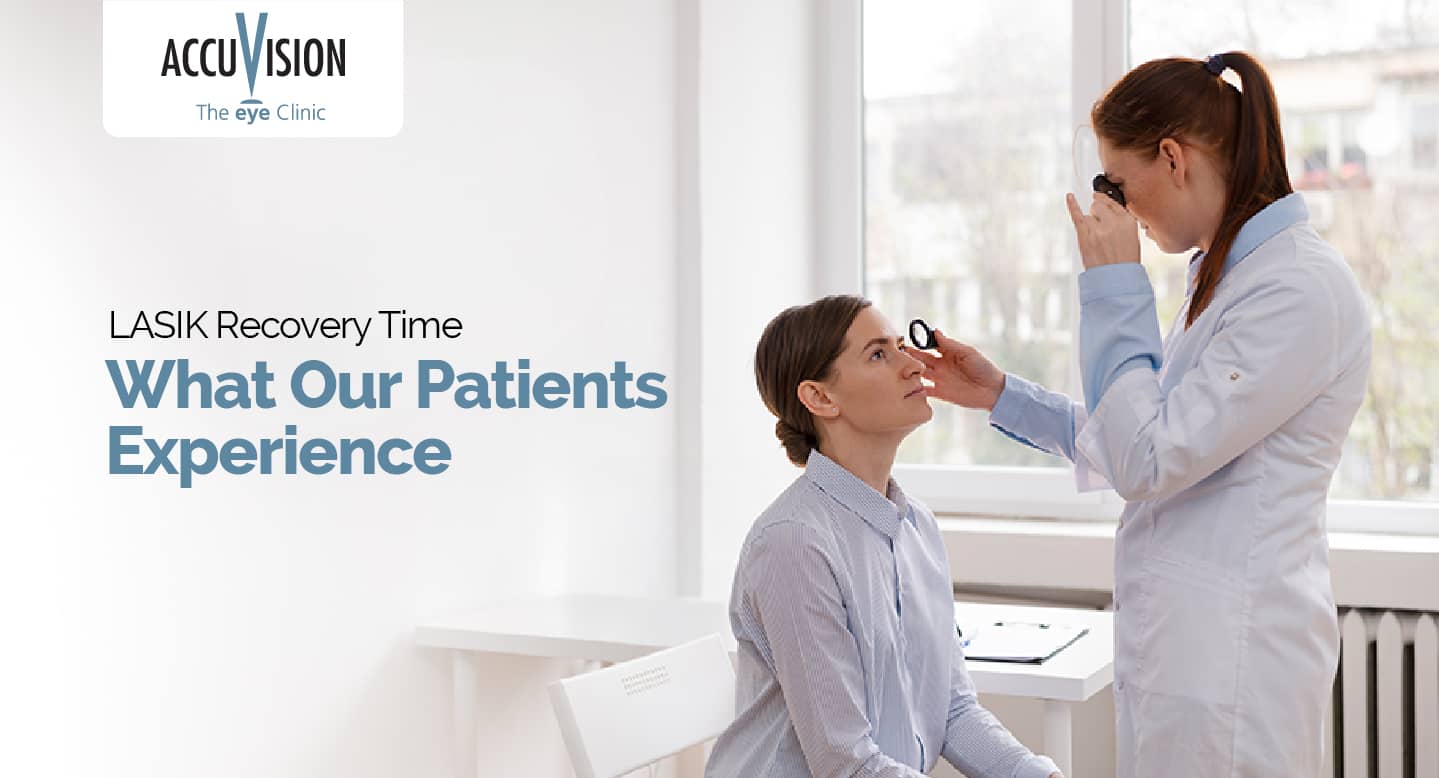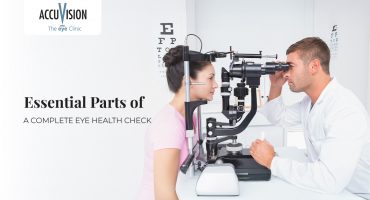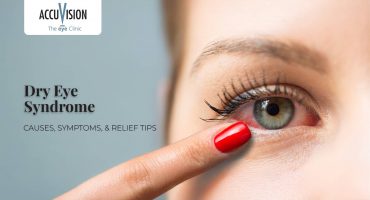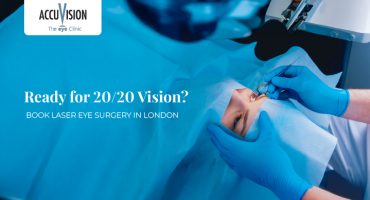- LASIK Recovery Time: What to Expect After Surgery
- What Happens in the First 24–48 Hours After LASIK?
- LASIK Recovery Timeline
- How Long Does LASIK Recovery Take? Vision Stabilisation After 1 Month
- Final Thoughts
- Frequently Asked Questions: LASIK Recovery Time
- Reference

LASIK Recovery Time: What to Expect After Surgery
LASIK surgery can help you see clearly without needing glasses or contact lenses every day. According to Solomon et al. (2009), LASIK is one of the most successful elective procedures worldwide, with more than 95% of patients reporting high satisfaction. Even though the procedure is fast and generally easy, understanding the recovery process helps you heal well and get the best outcome.
Most people are surprised by how much better they can see immediately after surgery, often clearer than with their previous glasses or lenses. The contrast in clarity highlights just how dependent we’ve become on visual aids and how freeing LASIK can be.
This guide outlines what you can expect during your LASIK recovery journey, including a breakdown of the healing stages, physical sensations, visual progress, and timelines for returning to work, screen use, and everyday routines.
What Happens in the First 24–48 Hours After LASIK?
Once the LASIK procedure is complete, your recovery begins straight away. Most patients are advised to take 24–48 hours away from their normal routine. The priority during this period is rest.
You’ll be sent home with specific instructions and eye drops to aid the healing process. It’s essential to avoid rubbing your eyes and to keep them closed as much as possible, especially in the first few hours. Some people may experience the following sensations shortly after the surgery:
- Scratchiness or mild irritation
- Watering or stinging
- Slight blurring
- Sensitivity to light
These symptoms are a normal part of how your eyes recover after surgery. Many patients describe a mild soreness rather than actual pain. A friend or family member should assist with applying your drops correctly during this time, as precise application makes a significant difference in how quickly your eyes heal. Post LASIK dry eye is uncommon in AccuVision patients owing to specialised preoperative care in cases where any eye surface concerns exist and thin flap treatment plans. In cases where patients experience any post operative dryness, it tends to be short lived and managed with topical therapy.
LASIK Recovery Timeline
Day 1: Rest and Initial Improvements
On the first full day after surgery, most people notice a clear improvement in their vision, even if there is still some haziness. Vision clarity will vary slightly from person to person, depending on their original prescription and how their eyes respond to the procedure.
It’s normal to feel slightly sensitive to light or to notice halos around lights, especially at night. Keeping your eyes lubricated with the recommended drops will help ease any dryness or discomfort.
At this stage, it’s important to:
- Continue resting
- Avoid screen use
- Wear sunglasses outdoors to reduce glare
- Avoid rubbing or touching your eyes
Days 2–3: Functional Vision Returns
By the second or third day, many patients are comfortably resuming simple daily tasks. Vision is usually clear enough to navigate everyday activities, and the initial discomfort should have faded. Some individuals may even be able to return to work, particularly if it involves desk-based tasks or minimal physical activity.
During this phase, you may still notice:
- Slight vision fluctuations
- Temporary sensitivity to light
- Grittiness in the eyes
- Dryness, particularly in air-conditioned environments
Lubricating eye drops help keep your eyes comfortable and support a healthy recovery.
Week 1: Settling Into Routine
As you move through the first week, your vision continues to stabilise. The majority of people report that their sight feels sharper and more consistent each day. Most discomfort or surface sensitivity subsides by the end of the first week.
Common recommendations during Week 1 include:
- Avoid swimming or soaking the eyes in water
- Refrain from using eye makeup
- Continue using medicated and lubricating drops
- Wear UV-protective sunglasses when outdoors
- Avoid dusty or smoky environments
You should still avoid any vigorous physical activity or sports during this period to protect the healing surface of the eye.
Weeks 2–4: Sharpening Vision
From the second week onwards, your vision should feel much more settled and reliable. Most patients report that they’re able to return to their normal routine at this stage, including work, screen use, and light exercise.
Any lingering side effects, such as halos around lights or occasional dryness, are usually minor and temporary. Your eyes continue to refine and adjust to their new shape, so some mild visual fluctuation is not unusual.
It’s still wise to:
- Keep your eyes away from water, especially in places like swimming pools.
- Use protective eyewear during outdoor or active tasks
- Continue using drops if advised
- Attend your follow-up appointments so your recovery can be closely monitored and any concerns addressed early.
How Long Does LASIK Recovery Take? Vision Stabilisation After 1 Month
By the end of the first month, the vast majority of patients feel completely back to normal. Vision is stable, clear, and often better than what they had with glasses or lenses. You’ll likely be enjoying the full benefits of the procedure: freedom from corrective eyewear and sharper, more natural sight.
Although the eyes continue to adjust for several weeks, most of the healing is complete, and you’re able to:
- Drive confidently, including at night
- Use screens for extended periods
- Travel without concern about losing contact lenses or glasses
- Engage in most physical and recreational activities
You may still use lubricating drops occasionally, especially in dry or windy environments, to keep your eyes feeling comfortable.
Final Thoughts
LASIK recovery is typically smooth, fast, and free from significant discomfort. Most people are back to their routines within a couple of days and enjoy continually improving vision in the weeks that follow. With proper aftercare, LASIK recovery is usually smooth and leads to long-term visual clarity.
Ready to explore if LASIK is right for you? Book a consultation today and take your first step towards a life with less reliance on glasses or contact lenses.
Frequently Asked Questions: LASIK Recovery Time
Q1. How soon will I notice results after LASIK?
Most patients report improved vision within hours of surgery. Clarity often continues to sharpen over the next few days, with many returning to work or screen use by day 2 or 3.
Q2. Is LASIK recovery painful?
LASIK is typically not painful. You may feel mild soreness, scratchiness, or dryness for the first few hours after surgery, but this is manageable with rest and prescribed drops.
Q3. When can I drive after LASIK?
You can resume driving once you feel comfortable to drive and once cleared at your post operative vision checks.
Q4. Can I use screens after LASIK?
Yes, but it’s best to limit screen use during the first 24–48 hours. After that, you can gradually return to screens in short intervals, using lubricating drops to reduce dryness.
Q5. How long before I can go back to work?
Most people with desk-based jobs return to work within 2–3 days. If your job involves physical activity or dusty environments, your surgeon may recommend waiting a little longer.
Reference
Solomon, K.D., Fernández de Castro, L.E., Sandoval, H.P., Biber, J.M., Groat, B., Neff, K.D., Ying, M.S., French, J.W., Donnenfeld, E.D. and Lindstrom, R.L. (2009). LASIK World Literature Review. Ophthalmology, [online] 116(4), pp.691–701. doi:https://doi.org/10.1016/j.ophtha.2008.12.037.





